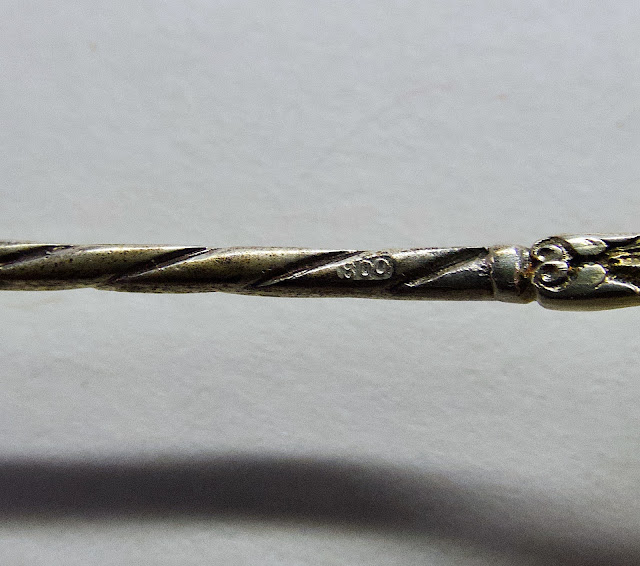Inside this reddish-brown box from our trove of treasures. . .
. . . is a set of six extraordinary antique demitasse spoons, nestled on yellow satin. What sets these spoons apart from your typical tableware is that each is topped with twin teeth!
During the Victorian period, there was a fashion for ornaments incorporating animal parts. Inspired by the Raj, tiger claws and teeth became earrings and pendants, pins made of grouse claws were a popular souvenir of Scotland, and the canine teeth of deer and elk could be found in a wide variety of gold and silver items. In Austria and Germany, it was a tradition to set deer teeth, typically the trophies of a successful hunt, into jewelry. Called "hirschgrandln," the tooth-trimmed jewelry was considered good luck, especially for future hunts. Prince Albert brought this tradition from his homeland, in 1860 giving his beloved Queen Victoria an ornate gold and enamel necklace adorned with the teeth of 44 stags hunted by Albert at the royal estate Balmoral in Scotland. Each tooth was inscribed with the date each animal was killed. Hirschgrandln became a popular souvenir for Alpine visitors, with a wide variety of pieces being made to satisfy the tourist trade. The finely detailed oak leaf motif on the top of each handle is very typical of hirschgrandln.
The spoons are marked "800," indicating that they are 80 percent silver. In 1884, 800 was made the national minimum silver standard in Germany.
All posted items are for sale at Next-to-New, but things can sell quickly!
6881-164





Interesting story!
ReplyDelete